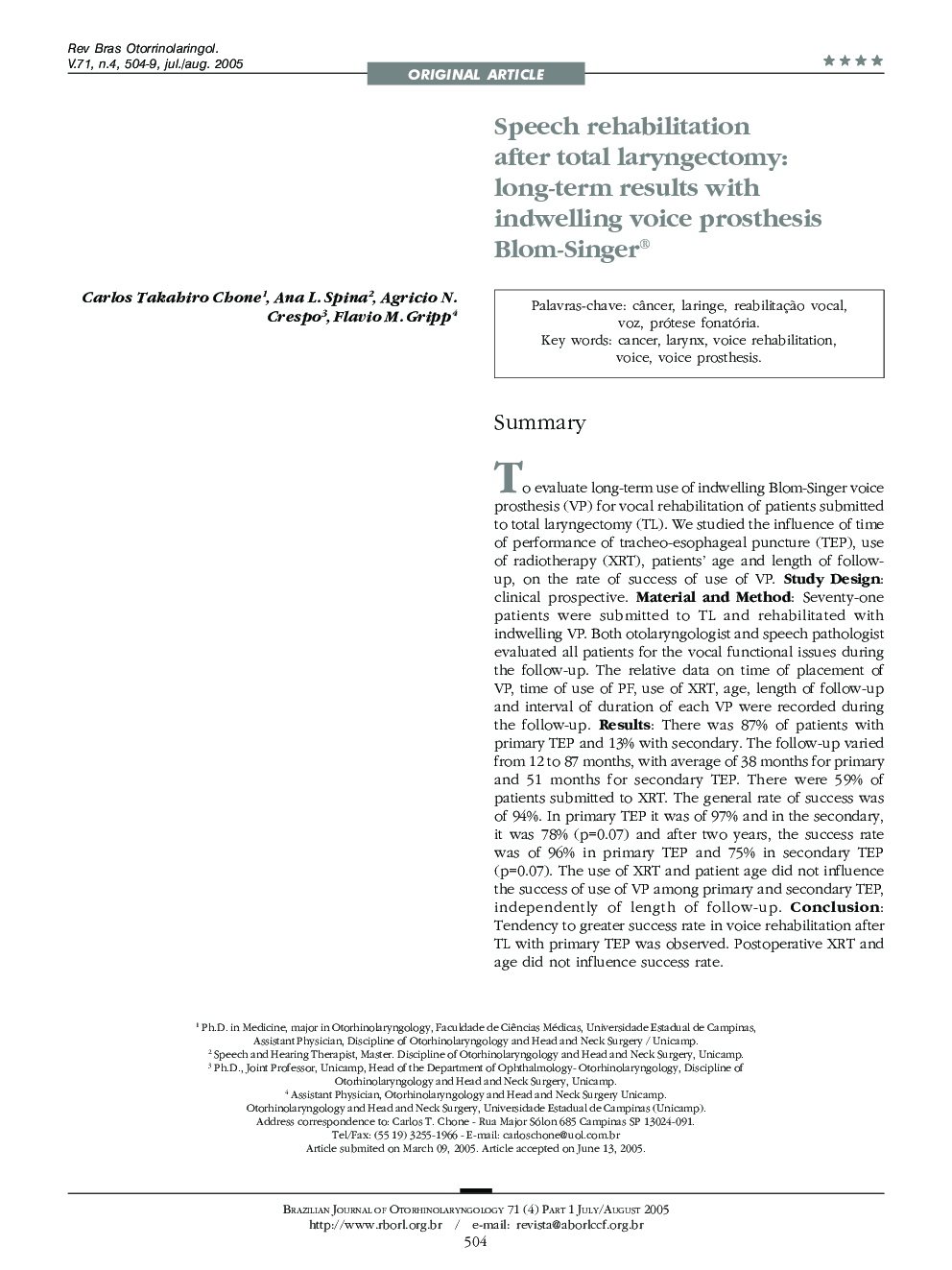| Article ID | Journal | Published Year | Pages | File Type |
|---|---|---|---|---|
| 10086920 | Brazilian Journal of Otorhinolaryngology | 2005 | 6 Pages |
Abstract
To evaluate long-term use of indwelling Blom-Singer voice prosthesis (VP) for vocal rehabilitation of patients submitted to total laryngectomy (TL). We studied the influence of time of performance of tracheo-esophageal puncture (TEP), use of radiotherapy (XRT), patients' age and length of follow-up, on the rate of success of use of VP. Study Design: clinical prospective. Material and Method: Seventy-one patients were submitted to TL and rehabilitated with indwelling VP. Both otolaryngologist and speech pathologist evaluated all patients for the vocal functional issues during the follow-up. The relative data on time of placement of VP, time of use of PF, use of XRT, age, length of follow-up and interval of duration of each VP were recorded during the follow-up. Results: There was 87% of patients with primary TEP and 13% with secondary. The follow-up varied from 12 to 87 months, with average of 38 months for primary and 51 months for secondary TEP. There were 59% of patients submitted to XRT. The general rate of success was of 94%. In primary TEP it was of 97% and in the secondary, it was 78% (p=0.07) and after two years, the success rate was of 96% in primary TEP and 75% in secondary TEP (p=0.07). The use of XRT and patient age did not influence the success of use of VP among primary and secondary TEP, independently of length of follow-up. Conclusion: Tendency to greater success rate in voice rehabilitation after TL with primary TEP was observed. Postoperative XRT and age did not influence success rate.
Related Topics
Health Sciences
Medicine and Dentistry
Otorhinolaryngology and Facial Plastic Surgery
Authors
Carlos Takahiro Chone, Ana L. Spina, Agricio N. Crespo, Flavio M. Gripp,
